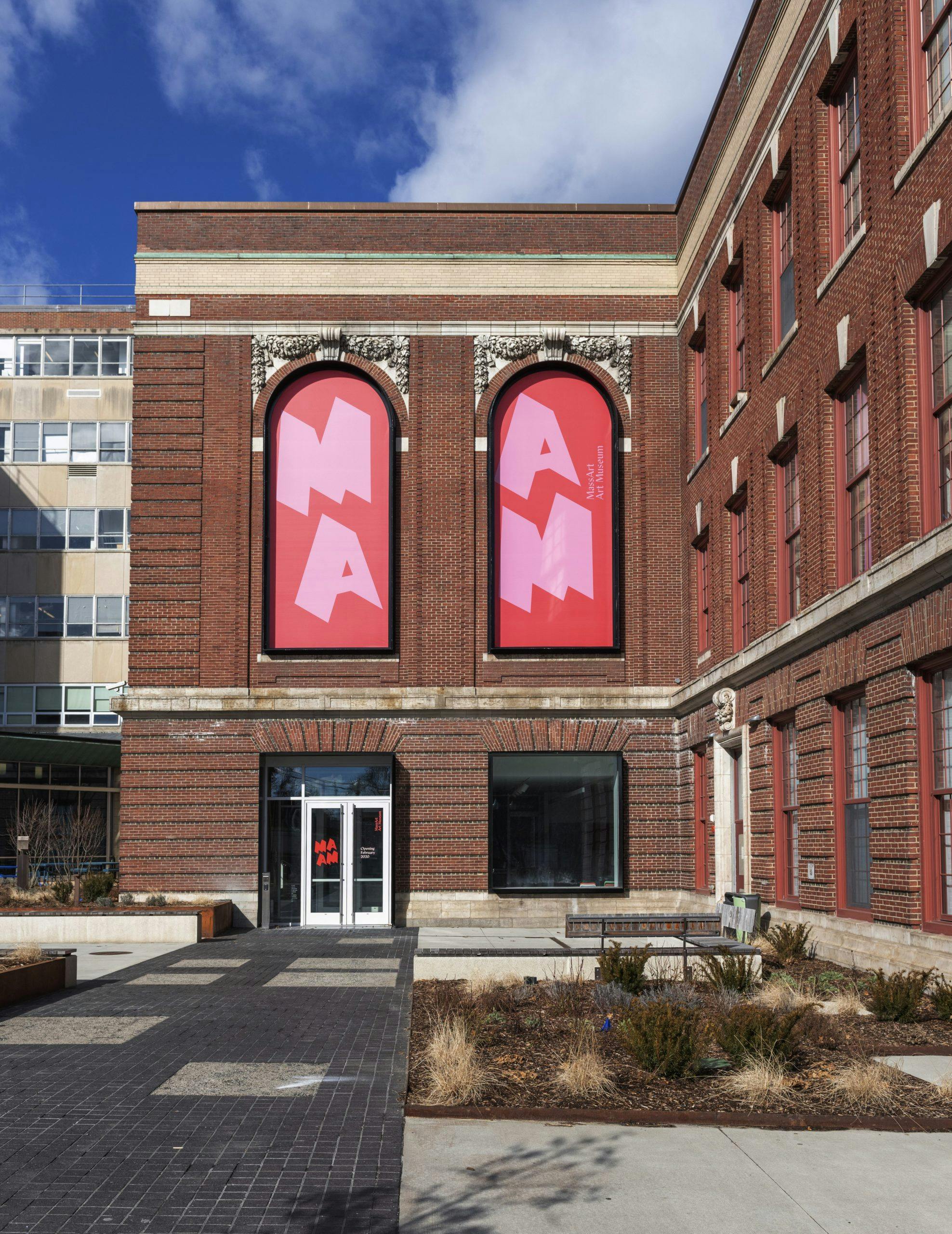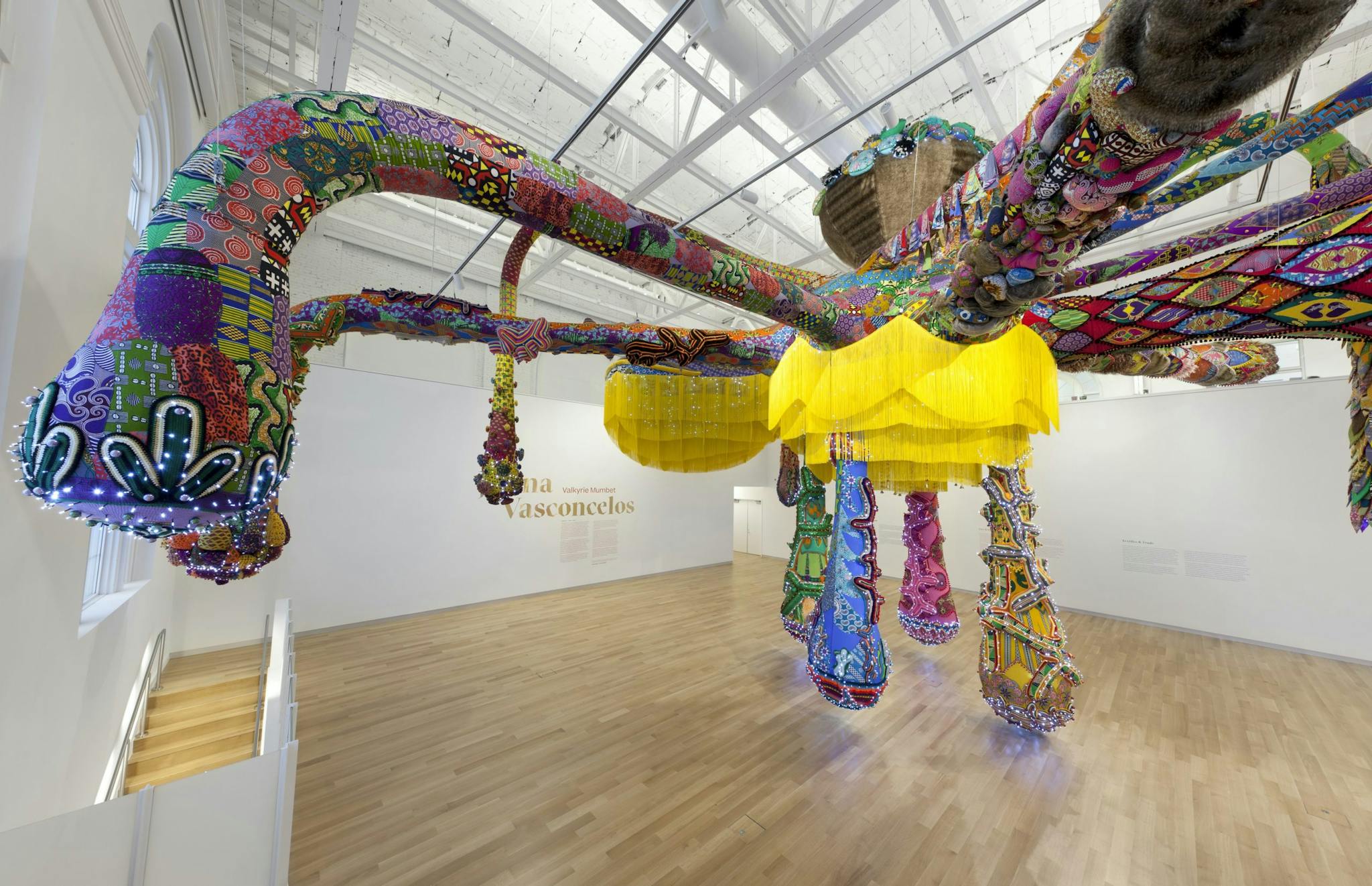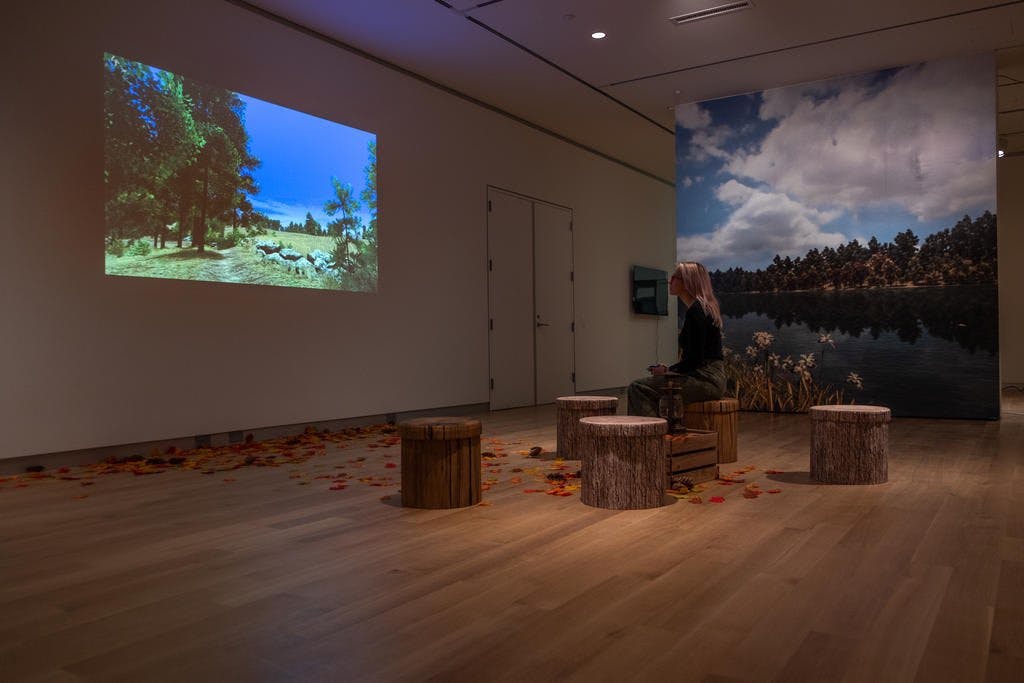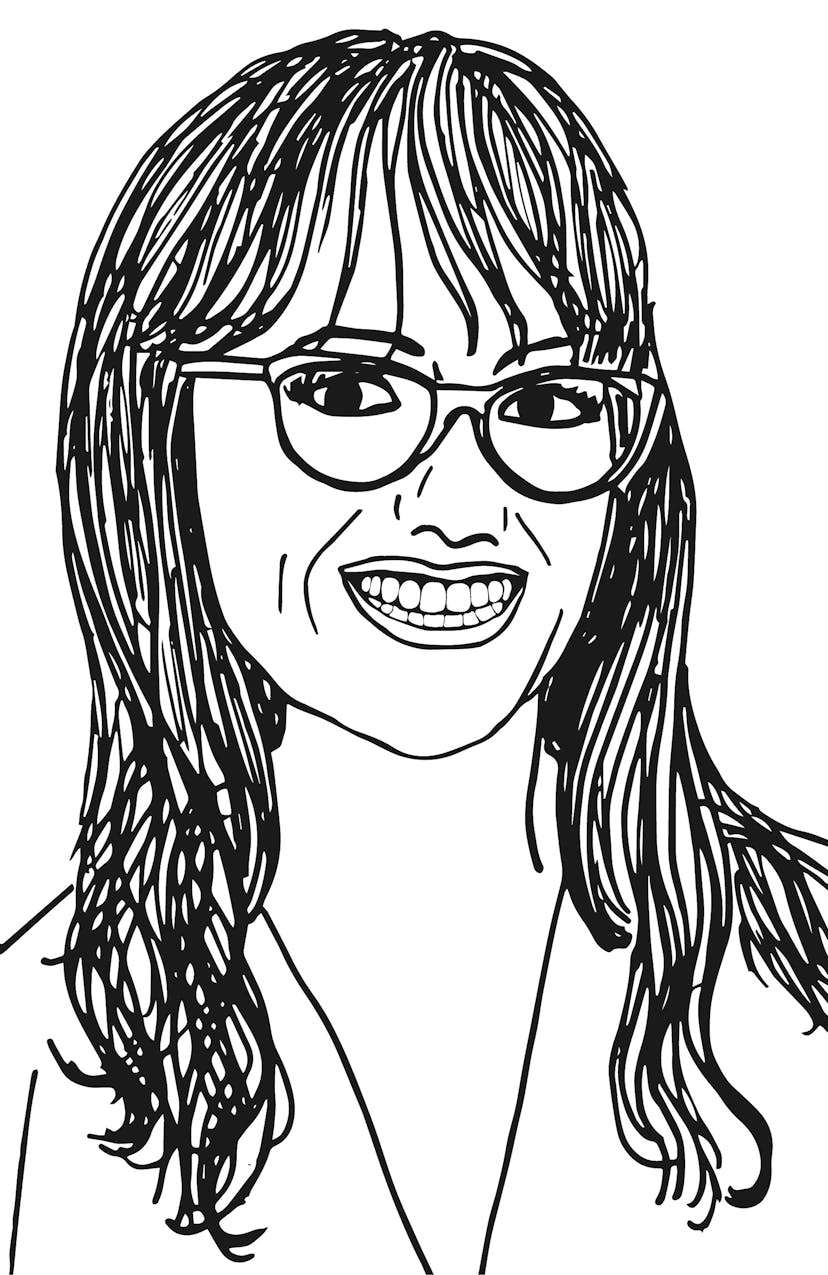It’s hard to roll out a welcome mat if you don’t have a front door.
MassArt’s Bakalar and Paine galleries had exhibited contemporary art under various names for decades, and admission was always free—if you could find them. Until recently, visitors had to navigate a maze of corridors, winding their way past classrooms and administrative offices before getting to the galleries. And the lack of a front door wasn’t the only frustration.
“We had no air conditioning, so that’s why we were always shut in the summertime. We had no relative humidity to speak of. We had no controllable heat; there was really just one thermostat for the entire building. We had no elevators. And we didn’t have any restrooms or lockers,” executive director Lisa Tung explains. “Our limited facilities really held us back from offering the best experience for our visitors and from exhibiting the full range of artwork that we wanted to show.”
All that’s changed with the February debut of the MassArt Art Museum, the result of a $12 million renovation and rebrand that required nearly two years of construction and a decade of planning. Dubbed MAAM for short, it’s a kunsthalle, or non-collecting museum, one that promises to be a far more accessible and inviting destination for art. It will be open year-round, with extended operating hours. There are lockers, an elevator, Instagrammable bathrooms, and an education studio that allows for messy art projects. The new glass front door offers a glimpse at the action within, and the façade’s hot-pink logo towers nearly two stories high—commuters on the E Line can’t miss it.
What’s more, the makeover allows for more ambitious programming, evident in the museum’s three opening exhibitions. Visitors encounter the first one as soon as they step inside. “From the outside, the building looks very conservative; it’s this historic 1907 Beaux-Arts building with beautiful Palladian windows and cornices and molding,” Tung notes. “So when people walk through our brand-new front door, I want them hit immediately with contemporary art.”
To that end, MAAM tapped Lauren Was and Adam Eckstrom, collage artists who collaborate under the moniker Ghost of a Dream. They work with discarded materials, repurposing the dross and debris of people’s hopes and dreams; previous projects have incorporated everything from used lottery tickets to casino carpeting and playing cards. For Yesterday Is Here, the work that covers the walls of the MAAM lobby, the duo drew on a cache of 10,000 catalogs, posters, postcards, and other ephemera from thirty years of MassArt exhibitions. On view through 2021, the site-specific installation arranges these pieces of the past in new geometric patterns, making the lobby feel like the inside of a kaleidoscope.
“There’s no misunderstanding of where you are,” Tung says. “You are definitely in a contemporary art space.”
Upstairs, Tung wanted a work tailormade for the vast proportions of the renovated Paine Gallery, where the drop ceiling was removed to reveal century-old steel beams. “We’re now able to safely hang large items from the ceiling, which we were never able to do before,” she says. “I thought, hey, wouldn’t it be great if we could show something that was entirely suspended from the ceiling, that was site-specific, a brand-new piece made for the opening?” Tung also hoped to feature an artist who’d never shown in Boston before. Both boxes were checked by Valkyrie Mumbet, a massive textile installation that marks the first US solo exhibition for Portuguese artist Joana Vasconcelos. She and a team of more than sixty artisans stitched for six months to create the sculpture, the latest in her Valkyrie series, which has highlighted a number of inspiring women. This work, on view until August 2, is named for local heroine Elizabeth “Mumbet” Freeman, an enslaved woman who successfully sued for her freedom in 1781 and set a legal precedent that helped end slavery in Massachusetts. Yellow pom-poms and gold beading nod to a necklace that was one of her prized possessions; fabrics reference ones Freeman owned and also include colorful capulanas from Mozambique, the former Portuguese colony where the artist’s parents grew up. Mozambican designer Wacy Zacarias and scholar M. Amah Edoh were slated to discuss the history of those textiles at a conversation in April, and a lecture on slavery’s legacy by Nikole Hannah-Jones, the journalist who spearheaded the New York Times’ 1619 Project, was scheduled for May [2020].
Such events speak to Tung’s amped-up ambitions for the museum’s public programming, but she’s also passionate about MAAM’s role as a teaching museum. “MassArt is the first freestanding, publicly funded art school in the nation. We educate tomorrow’s artists, designers, and art educators,” Tung says. “They’ve got to be able to go somewhere where they’re seeing stuff that is super inspiring to them.” Enter “Game Changers: Video Games and Contemporary Art,” the exhibition that fills the first floor’s Bakalar Gallery through August 2. Showcasing works from nine artists, it encompasses a range of media representing a number of MassArt’s eighteen fields of study, from animation (Tracy Fullerton’s Walden, A Game lets players walk in Thoreau’s footsteps) to painting (Dan Hernandez’s digital-and-acrylic compositions combine gaming aesthetics with iconography borrowed from the Old Masters—picture a pew-pew laser battle between angels and dragons presided over by the Virgin Mary). Of course, the museum offers educational opportunities beyond its exhibitions. MAAM is the campus’s largest employer of students, some of whom are preparing for careers in art education or curation; in any given semester, thirty-five to fifty will staff the new welcome desk, serve as guides in the galleries, and work behind the scenes.
Tung is quick to tout the strength of curatorial vision in Boston, home to the MFA, ICA, and Gardner museums, many campus museums and galleries, and new players like public art incubator Now + There, on whose board she serves. But she believes the MassArt Art Museum has a special role to play. “MAAM is unique in that we are a contemporary art museum at an art and design college,” Tung says. “We’re directly impacting the next generation.”
And with free admission and a highly visible location on busy Huntington Avenue, MAAM has an opportunity to serve the wider community as well as students. She notes that even before the doors opened, the new plaza out front attracted skateboarders and area workers on their lunch breaks. The opening weekend brought in thousands of people, and on the following Thursday, the first Drawing Together night—weekly sessions with free materials and instruction—had visitors of varied ages and backgrounds sketching away as MassArt musicians provided live accompaniment. “We worked really, really hard to make everyone feel welcome here,” Tung says. “Whether you’re an arts novice, someone who’s never walked into a museum before, or an art collector who’s been to a hundred different art fairs, we want you to feel at home.”
Less than three weeks after its opening, MAAM joined museums around the world in closing to combat the spread of COVID-19. While a new Drawing Together prompt goes up on Instagram every Thursday, many of us holed up at home have been reminded of the vital roles that shared social spaces play in our lives. In a time of unprecedented income inequality—a divide the pandemic reveals and deepens by the day—gathering places that are free and open to everyone feel particularly important. Just as parks offer access to nature and libraries provide access to information, art spaces can connect people with beauty and ideas and spark both conversation and quiet contemplation. They will do that again soon.



